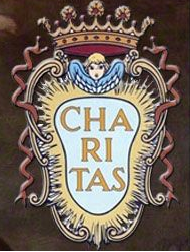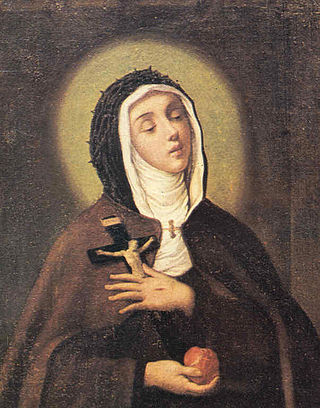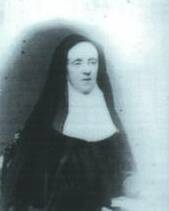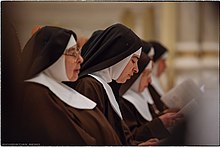
The Franciscans are a group of related mendicant religious orders of the Catholic Church. Founded in 1209 by the Italian saint Francis of Assisi, these orders include three independent orders for men, orders for nuns such as the Order of Saint Clare, and the Third Order of Saint Francis open to male and female members. They adhere to the teachings and spiritual disciplines of the founder and of his main associates and followers, such as Clare of Assisi, Anthony of Padua, and Elizabeth of Hungary. Several smaller Protestant Franciscan orders or other groups have been established since late 1800's as well, particularly in the Anglican and Lutheran traditions.

The Order of Friars Minor Capuchin is a religious order of Franciscan friars within the Catholic Church, one of three "First Orders" that reformed from the Franciscan Friars Minor Observant, the other being the Conventuals (OFMConv). Franciscans reformed as Capuchins in 1525 with the purpose of regaining the original Habit (tunic) of St. Francis of Assisi and also for returning to a stricter observance of the rule established by Francis of Assisi in 1209.

The Poor Clares, officially the Order of Saint Clare, originally referred to as the Order of Poor Ladies, and also known as the Clarisses or Clarissines, the Minoresses, the Franciscan Clarist Order, and the Second Order of Saint Francis, are members of an enclosed order of nuns in the Roman Catholic Church. The Poor Clares were the second Franciscan branch of the order to be established. Founded by Clare of Assisi and Francis of Assisi on Palm Sunday in the year 1212, they were organized after the Order of Friars Minor, and before the Third Order. As of 2011, there were over 20,000 Poor Clare nuns in over 75 countries throughout the world. They follow several different observances and are organized into federations.

The Minims, officially known as the Order of Minims, and known in German-speaking countries as the Paulaner Order, are a Roman Catholic religious order of friars founded by Francis of Paola in fifteenth-century Italy. The order soon spread to France, Germany and Spain, and continues to exist today.

Agnes of Assisi was a younger sister of Clare of Assisi and one of the first abbesses of the Order of Poor Ladies. Pope Benedict XIV canonized her as a saint in 1753.

The Order of the Immaculate Conception, abbreviated OIC and also known as the Conceptionists, is a Catholic religious order of Pontifical Right for nuns founded by Saint Beatrice of Silva. For some years, they followed the Poor Clares Rule, but in 1511 they were recognized as a separate religious order, taking a new rule and the name of Order of the Immaculate Conception.
The Third Order of Saint Francis is a third order in the Franciscan tradition of Christianity, founded by the medieval Italian Catholic friar Francis of Assisi.

Veronica Giuliani was an Italian Capuchin Poor Clares nun and mystic. She was canonized by Pope Gregory XVI in 1839.

Angelina of Marsciano, T.O.R. was an Italian religious sister and foundress, and is a beata of the Roman Catholic Church. She founded a congregation of religious sisters of the Franciscan Third Order Regular, known today as the Franciscan Sisters of Blessed Angelina. She is generally credited with the founding of the Third Order Regular for women, as her religious congregation marked the establishment of the first Franciscan community of women living under the rule of the Third Order Regular authorized by Pope Nicholas V.

Emerging since the 19th century, there are several Protestant adherent and groups, sometimes organised as religious orders, which strive to adhere to the teachings and spiritual disciplines of Saint Francis of Assisi.

Chiara Offreduccio, known as Clare of Assisi, was an Italian saint who was one of the first followers of Francis of Assisi.

Mary Magdalen Bentivoglio, OSC was an Italian Poor Clare. She was sent to the United States to found the first convent of the order in the country. She eventually established three of them before her death. Her beatification process has been opened and she has been granted the title of a Servant of God.
When referring to Roman Catholic religious orders, the term Second Order refers to those communities of contemplative cloistered nuns which are a part of the religious orders that developed in the Middle Ages.
The Colettine Poor Clares are a reform branch of the Order of St. Clare, founded by Clare of Assisi in Italy in 1211. They follow the interpretation of the Rule of St. Clare established by Saint Colette in 1410, originally a French hermit and member of the Third Order of St. Francis.

Mary Ignatius Hayes, O.S.F., also known as Mother Mary Ignatius of Jesus, was an Anglican religious sister who was later received into the Catholic Church and became a Franciscan sister. Her lifetime of religious service, in the course of which she traveled widely, led to the establishment of three separate religious congregations of Franciscan sisters and the establishment of the Poor Clare nuns in the United States.
Lucrezia Elena Cevoli was an Italian Roman Catholic professed religious of the Capuchin Poor Clares. She served as the order's abbess after the death of Veronica Giuliani. She later assumed the name of "Florida" after she joined religious life. She devoted her energies to the maintenance of the order in Umbria and carried out her assigned tasks with strong zeal and diligence.

Maria Llorença Requenses Llong was a Spanish Roman Catholic professed religious and the founder of the Capuchin Poor Clares. Llong founded the hospital of "Santa Maria del Popolo" in Naples where she relocated to and which received numerous papal privileges from Pope Leo X and Pope Adrian VI.

The Convento de Santa Clara la Real is a convent of the Poor Clares located in the city of Toledo, Castile-La Mancha, Spain. The present convent was founded in the middle of the 14th century by Toledan noblewoman María Meléndez, and is located near other monasteries of note, such as the monastery of Santo Domingo el Real and the Convent of Capuchins of Toledo.














